Today we are going to discuss one of my favorite and hotly debated topics…the best 9mm pistols1 on the market in 2023. We will discuss some of the modern classics like Glock, FN, SIG, and even a few new up and comers unveiled at this year’s SHOT Show.
If you’re looking for an awesome shooter in 9mm, and want to know which is the best 9mm for the price and accuracy, stick around and enjoy. You’ll get our full rundown including back-to-back 9mm reviews, comparisons and our editors choice.
The best 9mm handgun on the market is subjective and depends on individual preferences and needs. However, some factors that are commonly considered when determining the best 9mm handgun include:
- Accuracy: A handgun that can consistently shoot accurately is a key factor for many shooters.
- Reliability: A handgun that can operate without fail, even in demanding conditions, is a key factor for many people.
- Capacity: Some 9mm handguns have a higher capacity than others, which can be a deciding factor for some.
- Trigger: A good trigger can greatly improve the accuracy and speed of shooting.
- Ergonomics: A comfortable and easy-to-use grip and control layout can make a 9mm handgun easier to handle and shoot.
- Durability: A handgun that can withstand heavy use and harsh conditions is a key factor for many people.
- Size and weight: The size and weight of a 9mm handgun can impact its portability, concealability, and comfort during extended use.
Let’s get started with the advantages of the 9mm.
The Advantages of The 9mm
First things first, let’s address some of the controversy and common misconceptions of the 9mm round. A lot of firearms enthusiasts will say “The 9mm is junk” or “The 9mm has no stopping power.”
Well, I hate to break it to you: they couldn’t be more wrong. In the past 20 years, there have been several comprehensive studies on pistol rounds, measuring the muzzle velocity, impact force, and cavitation and expansion.
Most field tests incorporate gel-based medium but in one study, which I wholeheartedly believe is the best testing method, was, wait for it….tested on sheep.
I apologize in advance if this offends anyone, but the data conducted in these trials yielded some incredible data which changed modern ammunition designs, especially for the 9x19mm Parabellum.
These tests have shown 9mm rounds with the proper ballistic coefficient, meaning the optimum bullet weight and type, plus pressure (+P and +P+) powder loads, and the right handgun will give you a lightweight, high capacity hand cannon.
Keeping this in mind, let’s get down to business and talk about some guns!
1. Glock 19
Before I review this weapon, I’ll admit right off the bat that I’m a Glock guy. I believe that Glock handguns are some of the finest arms in modern times.
Since the 1980s, Glock has been the pistol of choice for thousands upon thousands of law enforcement agencies, conventional and special operations military units, competition shooters, and sheepdog concealed carry holders.
There’s a reason for this. Glock handguns offer unsurpassed reliability in the worst conditions imaginable. Glock tends to take user feedback and incorporates it into their designs, which is the ultimate peace of mind in my eyes.
I carried a Glock both on and off duty in my years of law enforcement service. My connection with this company is personal because their products have saved my life more times than I care to admit.
The Glock 19 is a compact model of the Glock 17, with a length of 7.44 inches, a width of 1.30 in, making it the perfect weapon for concealed carry, a service weapon, secondary battlefield weapon, etc. The 19 weighs in at 889 g or 31.39 oz.
Fully loaded with 17+1 rounds, which is incredibly light considering the firepower at your disposal. The Glock Safe Action trigger features several integral safety features in the trigger and internals of the gun; it won’t go off unless you squeeze the trigger.
The trigger pulls break like glass with a smooth single action trigger pull of 5.8 pounds, which if you’re familiar with pistolcraft, a long spongy double action trigger break is equivalent to going to the dentist.
Since Glock has been a predominant weapon manufacturer for almost four decades, the number of aftermarket parts and customizations available is astronomical. The 19 is an accurate, reliable handgun; customized, Glocks are utter nail drivers. To put it lightly, the Glock 19 will perform no matter the circumstances.
Pros
- Decades of proven reliability
- In service worldwide
- 17+1 round high capacity magazine
- A smooth 5.8lb trigger break
- Lightweight
- Raving customer reviews
Cons
- The Gen 4 Glocks had a cycling issue a few years ago due to a change in the recoil spring but has been addressed and resolved.
2. HK VP9
Released in 2014, the Heckler and Koch VP9 is still a relatively new weapon in the handgun market. HK is no stranger to producing world-class weapons, With the successes of the USP pistol models in the 80’s and 90’s, the G36 assault rifle, the legendary MP5 sub-machine gun; HK’s track record speaks for itself.
The VP9 is a new design, yes, but the VP, or “Volkspistole” translated to “Peoples Pistol” can trace its heritage to 1944 when Germany needed reliable handguns to continue the war effort. Needless to say, only two of the VP weapons survived the war, thankfully so because in 1970, A surviving member of the initial design team, Alex Seidel, armed with hard copies of the VP blueprints, created the VP70.
The VP70 was the first affordable and reliable peoples pistol, the current VP9 is no exception. The VP9 features a polymer frame with ergonomics similar to HK’s P30 handgun. The backstrap of the pistol grip can be swapped with various sizes to accommodate different hand sizes, but there is one bugaboo I have with HK. The standard HK grips are pretty thick at the base, so it’s difficult to seat the weapon as close to your hand as possible.
HK remedied this issue by completely reworking the ergonomics of the VP9 by incorporating a beavertail tang instead of a standard back strap. Also, the undercut trigger guard allows the shooter to seat their hand as close to the weapons bore axis as possible. This added feature makes follow up shots and recoil management much easier compared to other HK models in this class.
The VP9 is a striker fired 9mm, the firing pin is cocked internally, which means it doesn’t feature a hammer or decocking lever. The safety feature of the VP9 is an internal safety incorporated into the trigger shoe of the weapon, once the trigger is squeezed, the safety mechanism is released, freeing the firing pin to be engaged.
Pros
- Redesigned ergonomics allow for a much more comfortable grip compared to other HK handguns
- Very clean breaking trigger with a quick reset for follow up shots
- Full-sized rail for mounting gun lights and lasers
- Impressive three dot factory sights
- Ambidextrous magazine and slide release controls
Cons
- The magazine capacity is only 15 rounds, which is pretty low compared to other 9mm pistols of this size
- The aggressive texture on the grip of the weapon wouldn’t fare well in a gunfight in my opinion
3. FN FNS-9
In the tradition of being a polymer framed, striker fired pistol kind of guy; it’s only natural to review the FN FNS-9. If you’re not familiar with FN, I’d highly recommend a google search. FN is one of the most predominant weapon manufacturers on the planet.
FN has designed many weapons that are used by militaries worldwide, like the M249 Squad Automatic Weapon, the M4 carbine, and the FN P90 submachine gun. In the past few years, FN introduced a line of striker fired pistols, the FNS line.
Before the introduction of the FNS line, the FNP pistol line featured a hammer and de-cocking lever, which is fine, just not as appealing as a striker fired handgun. To meet the demand of striker fired pistols, like Glock, FN introduced the FNS line.
The FNS-9 is unfortunately overlooked handgun in the market. I have put hands on one of these gems; I put about 4,000 round through the FNS-9, I can honestly say this gun is a hell of a tack driver.
Out of the 4,000 rounds I put through it, the only malfunction I had was a slight hesitation in the slide to return to battery after about 3,000 rounds, not bad at all, as Glock guy, I was genuinely surprised with the performance of the FN. The trigger is a crisp 5.25 trigger pull with a .48 in reset in follow up shots.
The Trijicon sights are a little different than the conventional three dot sights, mainly due to the V-groove notch in the rear sight. I was a bit skeptical at first, but to my surprise, I felt like the FNS-9 sights were one of the best 9mm for target shooting, compared to say Glock sights, gulp.
The ergonomics are very comfortable on your hand, they feel very similar to the Glock 17 grip, but the FNS-9 comes with three interchangeable backstraps to accommodate various hand sizes.
Pros
- A lightweight, polymer, striker fired handgun
- 17 plus one magazine capacity
- Low bore axis, offering minimal muzzle flip and fast target acquisition
- The three dot sights with the V notch etched into the rear sights are phenomenal
- Very affordable
- Ambidextrous controls
Cons
- Extra magazines are expensive
- Not many aftermarket accessories or customizations available
- Although it’s not required, the FNS-9 has a manual safety
4. Sig Sauer P229
First introduced in 1992, The Sig Sauer P229 is the compact version of the legendary Sig P226, the popular 9mm handgun made famous by U.S. Naval Special Warfare operators, such as the SEALs, and is still carried by various special forces operators worldwide. The Sig 229 is a smaller, lighter weapon designed for law enforcement, federal agents, and concealed carry holders all over.
The P229 is quite the combat handgun. As a law enforcement officer, you tend to recognize which weapon design will work for you. For example, the Sig 229 is primarily a service pistol because of its heavy slide designed to mitigate recoil; it’s initial heavy double action trigger pull and single bar combat sights designed for rapid target acquisition and engagement.
Let me say right off the bat that the craftsmanship of the P229 is fantastic; the rubber Sig grips are among my favorite pistol grips because they feel intuitive and molded to fit your hands perfectly. The slide is tight, sturdy, and free of play, fashioned from a piece of solid stainless steel, combined with an aluminum alloy, making the P229 extremely lightweight.
The P229 isn’t striker fired like most weapons on our list, an exposed hammer cocks and activates the firing pin; there is no external safety. On the left side of the weapon are two levers, the slide release and a decocking lever, which the latter is the mechanism which will decock the weapon with a round in the chamber when the hammer is rearward in a single action.
Unless the hammer is manually cocked, the first shot will be a long and heavy 10-pound trigger pull, with the follow-up shots being a much lighter 4.4-pound single action trigger pull with the hammer cocked back in the rearward position.
I do have a qualm with the P229, the short frame of the weapon balances well, sure, but it’s accuracy isn’t as good as Sigs full-size handguns, like the P226 or the P220.
Pros
- Heavy, stainless steel/aluminum alloy slide
- Sig grips are some of the best
- Single bar combat sight
- Minimal recoil
- Accurate
Cons
- The weapon is heavy for a compact handgun
- Expensive
5. Beretta APX
I was intrigued when I heard Beretta had begun development on its take of a striker fired pistol a few years ago. For those of you who are unfamiliar with Beretta, I’d recommend watching Die Hard or Lethal Weapon, both Bruce Willis and Mel Gibson’s characters use the iconic 1980’s handgun, the Beretta M92FS, more commonly known as the Model 92 or M9 by the U.S. Military.
Beretta took the plunge and decided to update their weapons in the past 15 years, introducing the DA/SA Beretta PX4 Storm in 2004, and the Nano and Pico compact striker fired handguns, the APX is Beretta’s introduction into the brave new world.
Since the Beretta APX is a brand new pistol, there isn’t much feedback from operators of the weapon. The APX was initially designed for the U.S. Army’s Modular Handgun System program for replacing the old Beretta M9 handguns throughout the service. SIG Sauer eventually won the U.S. Army MHS program contract with their new P320 chambered in 9mm, but the APX was designed for military and law enforcement usage.
My initial impression of the APX holds faithful to the striker fired polymer pistol “functionality over aesthetic” design, meaning the gun may not look very pretty, but you know it won’t let you down when your life is at stake.
I wasn’t surprised when I learned Beretta’s designers traveled the world, taking considerations from thousands of beat cops, SWAT operators, frontline soldiers, and Special Operations commandos and incorporating the suggestions into the design of the APX.
One of the unique, modern features of this weapon is the removable fire control group, which allows the operator to remove the barrel, slide, and trigger group and swap it out with different caliber APX components. The trigger feels smooth straight out of the box with a six-pound trigger pull, the slide features very aggressive serrations which allow quick and easy manipulation when you’re reloading.
The frame is modular as you’d expect, a comfortable ergonomic grip with interchangeable back straps, a modular rail system for accessories, and raised three dot dovetail sights.
Pros
- Modular pistol design
- Striker fired service pistol
- 17 round plus one high capacity magazine
- Aggressive serrations along the length of the slide
- A comfortable ergonomic grip designed to provide friction in the shooters hand
- Ambidextrous controls
Cons
- Field stripping the weapon is confusing
- The trigger is good but not great, kind of a funky feel to it
6. Walther Creed
Every time I think of Walther firearms, I always think of James Bond and the awesome handguns that are unveiled in the movies. The Walther PPK, the Walther P99, the Walther PPQ, and now, the Walther Creed.
The Creed is Walthers newest addition to their polymer handgun line. It’s similar to several of the earlier models regarding ergonomics, and handling, yet different in its own right, primarily due to a different manufacturing method. First off, let’s talk about the trigger. I’m not a fan of heavy trigger pulls, but the Creeds trigger is fantastic for being a six and a half pound pull.
Walther incorporates a pre-cocked trigger, meaning the trigger only needs to be partially pulled. It’s a clean trigger break considering it’s a bobbed hammer design. The high bore axis makes for some snappy recoil when firing, making accurate follow up shots a little harder to acquire but it’s not the worst.
The grip is very, very slim with very little surface friction in hand, I have medium sized hands, so the Creed fit well, but I could see the grip being slightly uncomfortable for a marksman with larger hands.
The high, white three dot sights are designed for quick target acquisition, but when you’re looking at the sight picture, you’ll notice there is a significant gap on either side of the rear sight when focusing on the front sight. With a little practice, the sights don’t take much getting used to.
Disassembly and field stripping the Creed is very simple, clear the weapon, lock the slide to the rear, turn the takedown lever down, release the slide and you’re done. I love the fact you don’t have to dry fire the weapon to begin the takedown sequence.
Pros
- An affordable, top shelf handgun
- Smooth, clean breaking trigger pull
- Very user-friendly takedown field stripping
- Extremely accurate
- Although the grip is very slim, it’s comfortable in the hand
Cons
- The sights are pretty plain jane, with a wide sight picture between the front and rear sight picture
- Very high bore axis center line
- There isn’t much friction on the grip
7. CZ 75
What would a review of the best 9mm pistols in the world without mentioning the classic CZ 75? The CZ 75 is a steel framed pistol designed and introduced in 1975 by the Koucky Brothers. Considered one of the original wonder nines, like the Browning Hi-Power; the CZ 75 predates Glock, the Beretta M92FS, and the SIG Sauer P226.
Time for a history lesson. The weapons industry was a crucial aspect of Warsaw Pact countries during the Cold War. Many countries behind the Iron Curtain relied on arms imports from the Soviet Union, Czechoslovakia’s economy was predominantly weapons exports. Czech weaponry is some of the finest I’ve ever shot, granted, most of it is pretty outdated, gems like the CZ 75 are still in production, keeping up with modern weapon manufacturers today.
If you haven’t held a CZ 75 in your hands, you’re in for a real treat; I guarantee you will fall in love. The grip fits any sized hand like a glove, it operates like a 1911, firing in both DA/SA configurations. The safety and magazine release are easily within reach of your thumb; the grip is ultra-sleek, it’s almost like the Koucky Brothers understood that comfort is vital!
One of the more distinguishing features about the CZ 75, which many modern handguns don’t incorporate is the fact that the action of the slide is integrated directly into the slide instead of riding straight on top of the frame. I love this feature because the bore axis is extremely close to the shooters hand, minimizing muzzle flip for faster, accurate follow up shots.
The frame is tight, minimizing drag. The standard CZ 75 magazine holds 16 rounds plus one in the chamber; this was cutting edge back in the 70’s when most service weapons were six shot revolvers.
The double action/single action allows for CZ 75 users to carry the weapon like a 1911, keeping the gun in the cocked and locked position. If you try to engage the manual safety with the hammer down, don’t freak out if it doesn’t go into safe, double action/single action handguns only go into the safe position when the hammer is cocked.
CZ has released several variations of the CZ 75 since its inception; The CZ 75 phantom is a modernized take on the classic handgun design, featuring a rail system, removable sights instead of fixed sights, and a more durable poly coat finish.
Pros
- Extremely accurate
- Double Action/Single Action configuration
- All steel design
- Very low bore axis
- A huge market of aftermarket parts and customizations
Cons
- The weapon and magazines are more expensive than they use to be
- Maybe too heavy for some to carry concealed
8. Smith and Wesson M&P 2.0
I was fortunate enough to be in Las Vegas for the SHOT show this year, where I was able to handle one of these bad boys. When I was in the police academy in 2009, the Smith and Wesson M&P was the newest latest and greatest handgun on the market, in direct competition with Glock.
My department issued the M&P .40 for officers duty weapons, I opted for my Glock 17, but I have nothing but great things to say about the M&P. This year, I learned the M&P 2.0 is a more improved take on of its predecessor.
The grip of the M&P 2.0 is much more aggressive than the original, making the weapon way more secure in a gloved or wet hand. The front to back grip frame measurements are the same as the original M&P, but there is a new medium palm swell back strap available, giving four different grip options.
The frame is considerably tighter compared to the first model, which was one of the reasons I chose not to carry the M&P on duty. Every time I shot the weapon, I noticed the slide wiggled and chattered, drove me nuts, it’s nice to know Smith and Wesson listened to user feedback and fixed it.
The slides profile is slimmer on the top of the weapon, compared to the chunky slide on the original M&P. The stainless steel chassis extends past the dust cover, considerably decreasing torque and flexing of the frame when firing the weapon with a tactical light or laser sight on the gun.
The trigger is crisper, with a straight pull instead of the spongy two stage trigger in the first weapon. The reset of the trigger is noticeably shorter in the 2.0; the trigger bar has been redesigned to trip the sear with a rotating cam. The trigger pull is around six pounds; it’s damn near perfect.
Pros
- The slide is much slimmer and tighter than the original M&P
- The trigger is improved
- The grip offers a more aggressive texture and more friction in the hand
- A majority of M&P accessories and magazines will work in the M&P 2.0
- The new medium-large palm swell is very comfortable
Cons
- The 2.0 is too large for concealed carry for the average shooter
- The slide release is extremely stiff to disengage with your thumb
9. Springfield XDM 5.25
In 2009, Croation weapon manufacturer KS Produkt released the HS2000, primarily used by Croation law enforcement and military. In collaboration with U.S. weapon manufacturer Springfield armory, HS Produkt exported the HS2000 to the west, HS eventually sold the rights to the gun and rebranded the HS2000 as the Springfield Armory XD, short for extreme duty.
The XD has developed a strong foothold in the western handgun market since its release. The success of the XD has led to an entire product line of XDs in various configurations and sizes. More recently, the XDM model.
The XDM skyrocketed to fame amongst pistol shooters worldwide due to the impressive factory upgrades, like a match grade barrel, different slide serrations, interchangeable backstraps, and illuminated fiber optic raised sights.
The XDM was initially marketed with competition shooters in mind, after all, legendary competition shooter Rob Letham directly contributed to making sure the XDM was competition ready straight out of the box.
Much like the Glock 34, The XDM features an extended 5.25” barrel, which surprisingly isn’t ported to accommodate for the gas expansion, but a few inches of the slide is removed to reduce weight. The frame is a very aggressive textured polymer, with several interchangeable backstraps of course.
The action is striker fired with no external safety except the plunger built into the trigger and a 1911 like grip safety in the grip of the gun. All you have to do to disengage the safety features is grip the weapon as usual and squeeze the trigger. That’s it!
The XDMs disassembly is almost exactly like a Glock, with the exception of a takedown lever, but it breaks down into five parts. The guide rod and recoil spring separate, which makes cleaning the XDM a lot easier than other weapons in this class.
Reliability is no issue here; this gun has been used by law enforcement agencies, military units, and competition shooters for years. Not only do XDMs perform, but they also excel. I own the XDM in .40 S&W, I have feed it some of the cheapest, dirtiest ammo I could run through it to torture test it, and it fired flawlessly every time I pulled the trigger.
Speaking of rounds, the XDMs magazine capacity is a whopping 19 rounds plus one in the chamber! If you’re looking for an out of the box competition ready handgun, I highly recommend the Springfield XDM and in my opinion, it ranks as perhaps the best 9mm handgun ever made.
Pros
- Factory competition pistol without the need for any modifications
- Two internal safeties that are disengaged automatically when firing the gun
- 19 plus one magazine capacity
- Ergonomics of the grip fits your hand like a glove, as well as a few interchangeable backstraps
- This gun shoots so well; you’ll think you’re naturally that skilled
- The weapon comes with three magazines, a mag assist loader, a cleaning brush, a gun lock, an outside the waistband holster, and a magazine pouch!
Cons
- The first handgun to ever make me reconsider Glocks being the best handgun in the world
- Honestly, nothing. This gun is perfect
Other Gun Guides
If you are looking for the best .308 rifles on the market, we’ve got you covered.
Wrapping Up The Best 9mm Pistols
Thank you for stopping by and reading my comprehensive review of the best 9mm handguns 2022.
We have talked about some classic “Wonder Nines” like the CZ 75; the Glock 19 workhorse, the legendary SIG P229, Beretta’s new striker fired handgun, the APX, Walthers inexpensive, high-quality Creed.
Smith and Wesson updated M&P 2.0, HKs new peoples gun, the VP9, FNs striker fired FNS-9, and last but not least, my favorite weapon on our list, the Springfield Armory XDM. I love the 9mm round, a small bullet with a ton of stopping power.
Any one of the handguns on this list will never let you down regardless of your reasons for shooting them. As always, stay safe, and shoot straight!
Resources:
1. https://en.wikipedia.org/wiki/9_mm_caliber


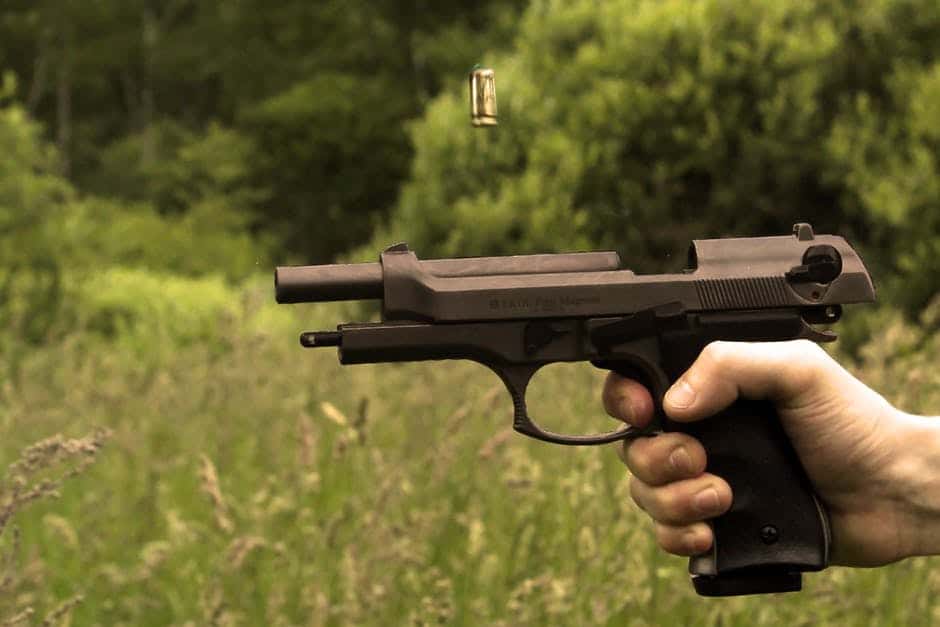
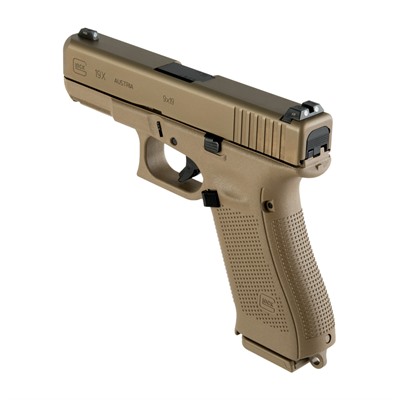

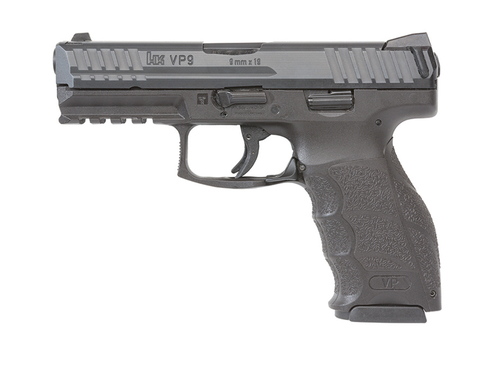
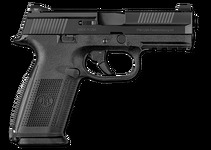
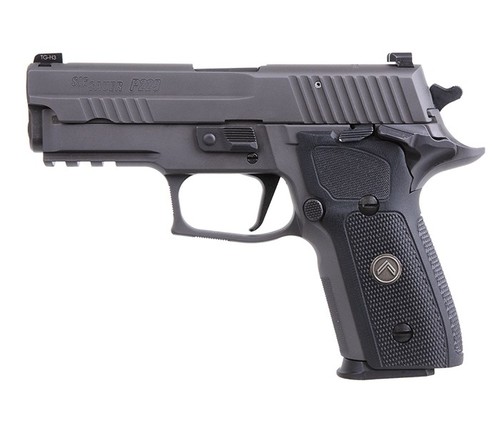
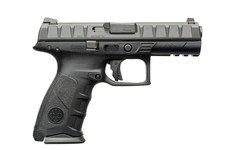
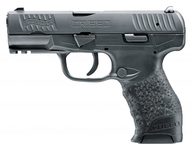
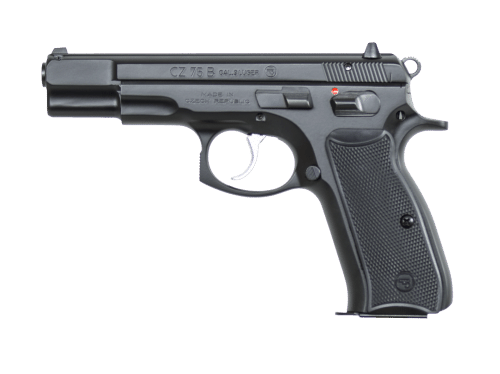

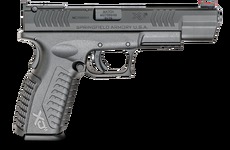
3 comments
Very useful evaluation.
An excellent, organized, and well thought-out review of the best 9mm handguns of 2019. Thank you for sharing your expertise.
I picked up a Walther Creed today…SUPER SWEET! The trigger is very nice. Got it for below $300. This should be the 9mm pistol for the masses.
Comments are closed.